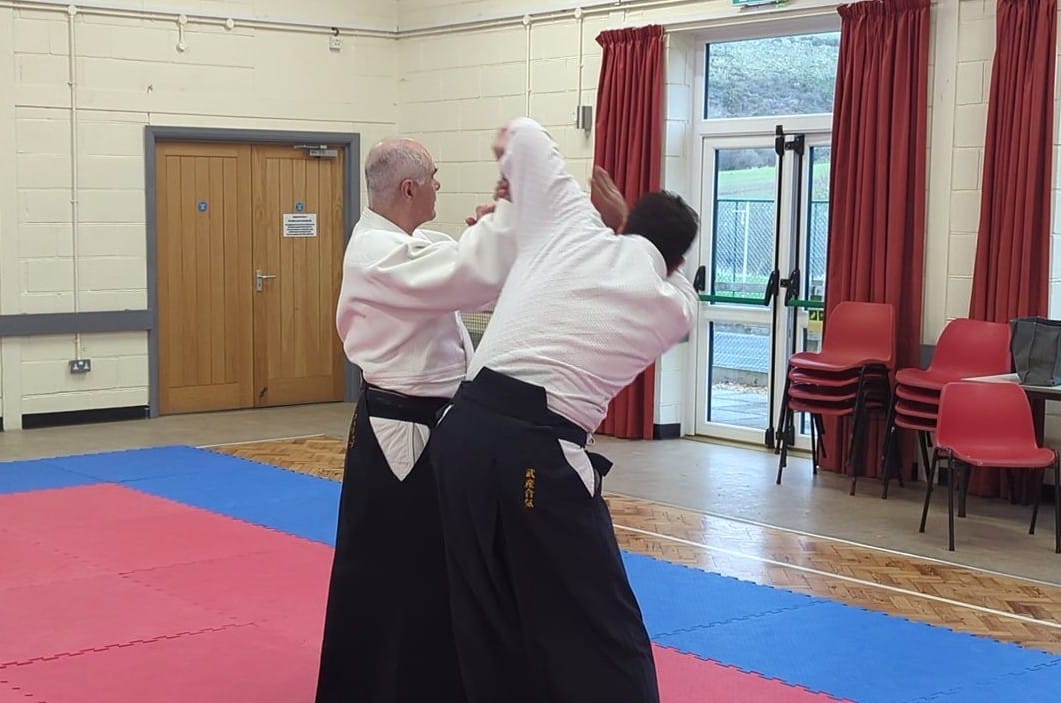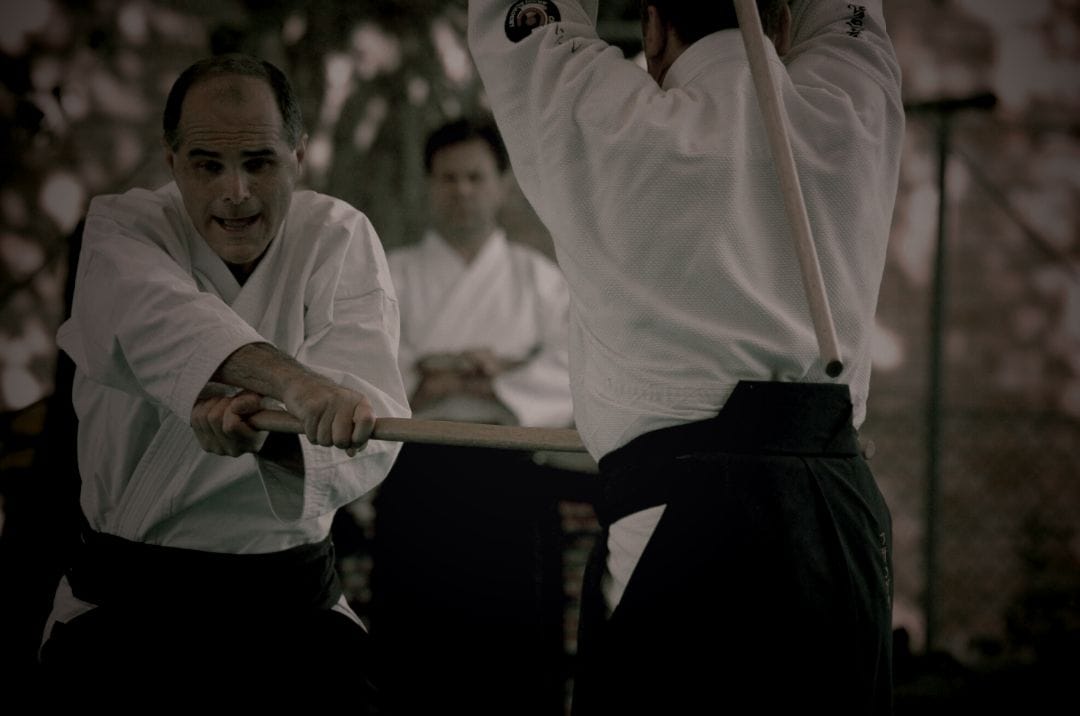回転 - kai ten, are the ideograms used in Aikido to name the kaiten nage technique, their meaning is rotation, revolution.
Note that the same word kaiten with a different spelling ( 回天 ) means departure for the sky. This is interesting because the kaiten nage technique is indeed a revolution, but even more specifically a revolution that starts from the earth and spins skywards, as can be seen in the video:
The technique shown in the video is soto kaiten nage, soto meaning outside. This is because the spiral is performed from start to finish on the outside of uke's arm. This differs from uchi kaiten nage, which is the same technique but performed on the inside (between uke's arm and chest), uchi meaning inside. Note that the direction of rotation of the body axis is reversed depending on whether the kaiten nage is uchi or soto, which is one aspect of the complementarity of opposites.
That kaiten nage is characterised by a spiralling movement, sometimes on the outside, sometimes on the inside, should not be confused with what O Sensei talks about in his book Budō, when he explains that with regard to displacement there is an outer spiral, and also an inner spiral. These two things have nothing to do with each other. The first relates to the characteristics of the execution of one particular technique - kaiten nage in this case - and the second relates to the movement common to all techniques.
Kaiten nage is one of the techniques of the 3rd law of Aiki, just as ikkyo is, for example, one of the techniques of the 1st law, or kote gaeshi one of the techniques of the 2nd law. There are four laws in all.


